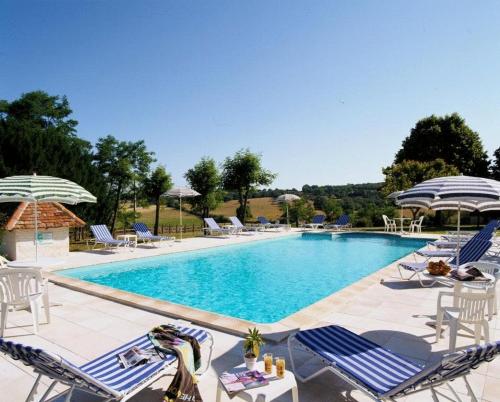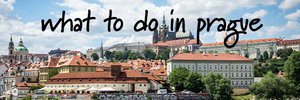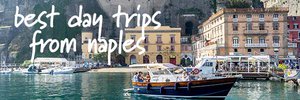Rocamadour, France
If you found a body in a cave in France, 3000 kilometres from Jerusalem, what would be your first thought?
Perhaps you would check with the local authorities to see if anyone had gone missing. Perhaps you would assume they were homeless and had crawled into this small space for protection from the elements. Perhaps you would have no idea and not jump to any conclusions.
Whatever your reaction, I’m guessing you would not automatically think that the body belonged to a saint who had met Jesus in a tree a millennium earlier.

But it seems that in the Middle Ages the imaginations of the people were not so constrained. When a body was found in a small nook on a cliff in southern France in 1166 AD, the people declared that it must be Saint Zacchaeus – the famous tax collector who was embraced by Jesus after he said he was giving away half his wealth.
Never mind that Zacchaeus had died about 1100 years earlier and nowhere near France. It was because of medieval legend and the fact that this body was perfectly preserved that people were able to pretend it was actually him.

Well, I say ‘pretend’ but is it possible that the people actually believed this story? It seems so improbable – impossible really – yet we all sometimes look for signs for guidance or justification for reassurance.
This body within the cliff may have been just the thing that was needed at the time. Or maybe their attitude was closer to a blend of belief and pretence where one flows into the other at an indeterminable junction. After all, is religion not a leap of faith based on ideas that seem implausible when tested by logic?

The site where the body was found was to become what is known today as Rocamadour – one of the most popular tourist sites in France. In the few centuries after that ‘fateful’ day in 1166, a large religious complex appeared on the cliffs. Churches and chapels were built, incorporating the natural structures of the caves and the rock formations.

As word spread of the ‘miracle’ body that had been found, pilgrims began to make the journey to Rocamadour. The numbers grew and the town at the bottom of the cliff took shape.
These days, this town serves pretty much the same purpose it did when it was established – with shops and restaurants for the thousands of tourists who come every day.


It’s fair to say that I fit into the description of ‘tourist’ much more than ‘pilgrim’ in the context of my visit, but my journey still has a brush with arduousness.
Unlike most of today’s visitors, I did not arrive by car or coach. Instead, I cycled for about 15 kilometres from the nearby town of Meyronne.
It was a rest day as part of my active week of exploration around this part of France with Headwater Holidays and I could choose what I wanted to do.
I decided a trip to see this beautiful historic site was the best option.
However, with the temperature approaching 40 degrees and a total of about 30 kilometres of cycling, it was more gruelling than I expected. Still, fitting for the destination, I suppose.


Even once you’ve arrived at Rocamadour, the journey continues. What goes up must come down and, whichever direction you approach it from, you need to climb up and down the cliff to see all the different elements of the complex.
I start at the top and go down the winding path, past small stone shrines at most of the bends. Eventually I arrive at the religious heart of Rocamadour – the cluster of churches and chapels on a rocky plateau – and go inside the Basilique St-Sauveur.
The stunning interior blends the natural formations with the construction of the church and is filled with small artistic details and an impressive organ.


I can see why this is such a popular stop for those on a religious pilgrimage. I say ‘stop’, rather than ‘destination’, because that is traditionally how many people would have approached their visit to Rocamadour.
The famous European pilgrimage route of the Santiago de Compostela passed through France and this was one of the places that these pilgrims would have come through since the Middle Ages.

For this reason, Rocamadour is part of a World Heritage Site called ‘Routes of Santiago de Compostela in France’. As you probably know, I have an aim to visit every World Heritage Site.
I am hesitant to now cross this one off the list because I think just visiting one location of a connected path is against the spirit of the World Heritage listing. However, what I will do is mark it down as done now but with a commitment to return one day and walk a decent amount of the route and visit more locations.
Do I believe that I have now visited this World Heritage Site or am I just pretending? Or is the truth somewhere in between?
It’s not so simple to answer this question and it makes me think again of those people almost a thousand years ago who found a body in a cave and declared it to be a saint.

I guess we all do the same thing these days – claim something is the oldest, the tallest, the smallest. Particularly in tourism marketing.
We say it has been visited by an actor, has appeared in a television show, or has been endorsed by a music star.
Perhaps it’s not so different to what the people did a thousand years ago when they said the body of Saint Zacchaeus had been found here – a clever bit of marketing that has turned the site into one of the most beautiful and visited parts of France.
THE BEST ACCOMMODATION IN ROCAMADOUR
The most convenient places to stay in Rocamadour are in the town itself, but there are also good options in the nearby countryside.
BUDGET

While nothing is cheap in Rocamadour, Relais Amadourien offers great value for lovely modern rooms a short walk from the town’s sights.
APARTMENT

For a bit more space, the wonderful Le Pardès BnB is set in the countryside with two bedrooms, a pool… and private beach access!
BOUTIQUE

Set in a charming old renovated residence, Hotel Beau Site has a central location, beautiful views, and a great restaurant.
LUXURY

Surrounded by nature, Hôtel Le Troubadour almost feels like a resort with its pool and gardens, along with lovely rooms and service.
Time Travel Turtle was supported by Headwater Holidays as part of a Captivate project but the opinions, over-written descriptions and bad jokes are his own.






I had no idea Rocamadour was so popular. I went there on a recommendation of a friend who had never been there. It’s such a beautiful place, and I also didn’t know that crazy story behind the town. How random!
It is funny how little you hear about it, considering the number of visitors. But it’s such a beautiful place – it definitely makes sense. That’s great you got to see it for yourself!
If you find it odd that people would believe such things, see what deeply religious people believe nowadays, despite all the scientific knowledge we have about many things… So imagine 1,000 years ago, without that knowledge, at a time religion was more important than most things (The way Europe was with Christianity at the time is not too different from the way some countries in Western and Central Asia can be with Islam nowadays).
Also, it wasn’t just one miracle that took place there, but several.
St Amadour’s body wasn’t discovered under a random rock, but under the rock where Durandal, Roland’s sword was stuck since he threw it away from the Pyrénées mountains (270 km south away) in the 9th Century, before dying.
Also, right next to St Amadour’s tomb, there is a chapel with the Black Virgin that is the source of several miracles, including a bell that rings when a ship that is blessed by her has trouble at sea…
And a few more things…
🙂
Ha! Thanks for all the extra detail. I saw the Black Virgin – it’s quite pretty (and definitely unusual).
I know what you mean about believing things, despite the scientific evidence and the knowledge of today. That’s the point of faith, isn’t it? You believe the stories that work for you. I don’t think that’s changed at all in thousands of years!
Oh how I long to visit Rocamadour! Last time I intended to visit I had a car accident on my way there, so I haven’t tried to return since. Now I’m thinking that I might have to, after seeing your beautiful photos!
Oh no, that’s awful. I hope you were ok after the car accident. Fingers crossed you get back again sometime soon. You could go there by bike, like I did, if you’re worried about driving again! 🙂
Beautiful photos. I love the way the town is built into the cliffs and caves, and it holds so much history! Even though you visited for a short time, it seems like you got a healthy dose of the culture and history. Thanks for the post!
It’s actually not somewhere you need to spend too long – half a day is fine. There is quite a lot of details in the churches and the chapels but the site itself is not huge. The town at the bottom is just full of shops and restaurants for tourists so they can be avoided to save time.
What a stunning place! And obviously one of great articles!
Well, Michael,this is a much better post than the one I was proposing to post on my blog. Great photos. I was in an odd space the afternoon we spent there. I sat quietly in one of the chapels, didn’t join the crowds in the others. I did feel a strong sense of the millions who must have walked that track with the 14 stations of the Cross and was so grateful that I have a fortunate life, being born when I was. I like the tone of your writing too. I’ve been getting by phrases and labels. Need to lift my game.
I’d like too add a link to my latest post, if I may?
Thanks. M
On the pilgrims path down the mountain side as you get towards the enterance to the gate or keep there is a small art installation in a cave to the right… cleverly hidden behind the modern sculpture is a tunnel enterance to a very deep cave right in the heart of the cliff… there is no tourist access but it is also not restricted as such… its all down to a brave soul with a torch to discover what lies beneath!
Thank you for the great pictures of Rocamadour. We hope to visit there someday, as for the basis for the town the truth of the gospel enables one to see.
This article is not mentioning the sad past of all his inhabitants shot in WW2 .